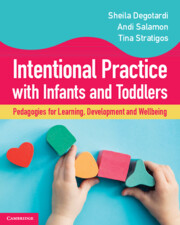Refine search
Actions for selected content:
530 results
16 - Networking
- from Part 3 - Engages Others
-
-
- Book:
- Leading and Managing Health Services
- Published online:
- 15 August 2025
- Print publication:
- 28 August 2025, pp 177-188
-
- Chapter
- Export citation
Unlocking mental health insights with UK Biobank data: Past use and future opportunities
-
- Journal:
- Psychological Medicine / Volume 55 / 2025
- Published online by Cambridge University Press:
- 26 August 2025, e244
-
- Article
-
- You have access
- Open access
- HTML
- Export citation
Copyright Exceptions and Fair Use Defences for AI Training Done for “Research” and “Learning,” or the Inescapable Licensing Horizon
-
- Journal:
- European Journal of Risk Regulation , First View
- Published online by Cambridge University Press:
- 29 July 2025, pp. 1-24
-
- Article
-
- You have access
- Open access
- HTML
- Export citation
Mapping the evolution of data governance scientific research
-
- Journal:
- Data & Policy / Volume 7 / 2025
- Published online by Cambridge University Press:
- 21 July 2025, e51
-
- Article
-
- You have access
- Open access
- HTML
- Export citation
Representation of women on National Institutes of Health study sections before and during COVID-19 pandemic
-
- Journal:
- Journal of Clinical and Translational Science / Volume 9 / Issue 1 / 2025
- Published online by Cambridge University Press:
- 07 July 2025, e152
-
- Article
-
- You have access
- Open access
- HTML
- Export citation
Academic psychiatry is everyone’s business: commentary, Critchley
-
- Journal:
- The British Journal of Psychiatry / Volume 227 / Issue 1 / July 2025
- Published online by Cambridge University Press:
- 21 July 2025, pp. 507-508
- Print publication:
- July 2025
-
- Article
- Export citation
31 - Conclusion
- from Part VI - Language Skills and Areas
-
-
- Book:
- The Cambridge Handbook of Technology in Language Teaching and Learning
- Published online:
- 15 June 2025
- Print publication:
- 26 June 2025, pp 511-520
-
- Chapter
- Export citation

Intentional Practice with Infants and Toddlers
- Pedagogies for Learning, Development and Wellbeing
-
- Published online:
- 17 June 2025
- Print publication:
- 12 June 2025
-
- Textbook
- Export citation
Truthful communication of mental science: pledge to our patients and profession
-
- Journal:
- The British Journal of Psychiatry / Volume 226 / Issue 5 / May 2025
- Published online by Cambridge University Press:
- 24 April 2025, pp. 253-255
- Print publication:
- May 2025
-
- Article
-
- You have access
- HTML
- Export citation
Russia’s policy of presence in Svalbard
-
- Journal:
- Polar Record / Volume 61 / 2025
- Published online by Cambridge University Press:
- 31 March 2025, e11
-
- Article
-
- You have access
- Open access
- HTML
- Export citation
Investigating research study participant compensation practices at a California academic and research institution
-
- Journal:
- Journal of Clinical and Translational Science / Volume 9 / Issue 1 / 2025
- Published online by Cambridge University Press:
- 31 March 2025, e103
-
- Article
-
- You have access
- Open access
- HTML
- Export citation
Characteristics of research review boards in the context of community-academic settings: A scoping review
-
- Journal:
- Journal of Clinical and Translational Science / Volume 9 / Issue 1 / 2025
- Published online by Cambridge University Press:
- 28 March 2025, e82
-
- Article
-
- You have access
- Open access
- HTML
- Export citation
Implementation and evaluation of a group peer mentoring and leadership development program for research faculty in academic medicine
-
- Journal:
- Journal of Clinical and Translational Science / Volume 9 / Issue 1 / 2025
- Published online by Cambridge University Press:
- 26 March 2025, e63
-
- Article
-
- You have access
- Open access
- HTML
- Export citation
9 - Conclusion
-
- Book:
- Comprehensive Deterrence Theory
- Published online:
- 06 March 2025
- Print publication:
- 13 March 2025, pp 227-240
-
- Chapter
- Export citation
1 - Introduction
-
- Book:
- Comprehensive Deterrence Theory
- Published online:
- 06 March 2025
- Print publication:
- 13 March 2025, pp 1-13
-
- Chapter
-
- You have access
- HTML
- Export citation
2 - The Need for Reconceptualizing Deterrence Theory
-
- Book:
- Comprehensive Deterrence Theory
- Published online:
- 06 March 2025
- Print publication:
- 13 March 2025, pp 14-34
-
- Chapter
- Export citation

Autistics in Academia
- Narratives of Work, Adversity, and Achievement from Around the World
-
- Published online:
- 06 March 2025
- Print publication:
- 13 March 2025
Chapter 24 - A Look Ahead for Prediction Research
- from Part V - The Future of Prediction
-
- Book:
- Looking Ahead
- Published online:
- 20 March 2025
- Print publication:
- 06 March 2025, pp 278-291
-
- Chapter
- Export citation
Research Misconduct and Medical Journals
-
- Journal:
- Journal of Law, Medicine & Ethics / Volume 53 / Issue 1 / Spring 2025
- Published online by Cambridge University Press:
- 27 March 2025, pp. 35-40
- Print publication:
- Spring 2025
-
- Article
-
- You have access
- Open access
- HTML
- Export citation
The Need for Prospective Integrity Standards for the Use of Generative AI in Research
-
- Journal:
- Journal of Law, Medicine & Ethics / Volume 53 / Issue 1 / Spring 2025
- Published online by Cambridge University Press:
- 27 March 2025, pp. 74-79
- Print publication:
- Spring 2025
-
- Article
-
- You have access
- Open access
- HTML
- Export citation
